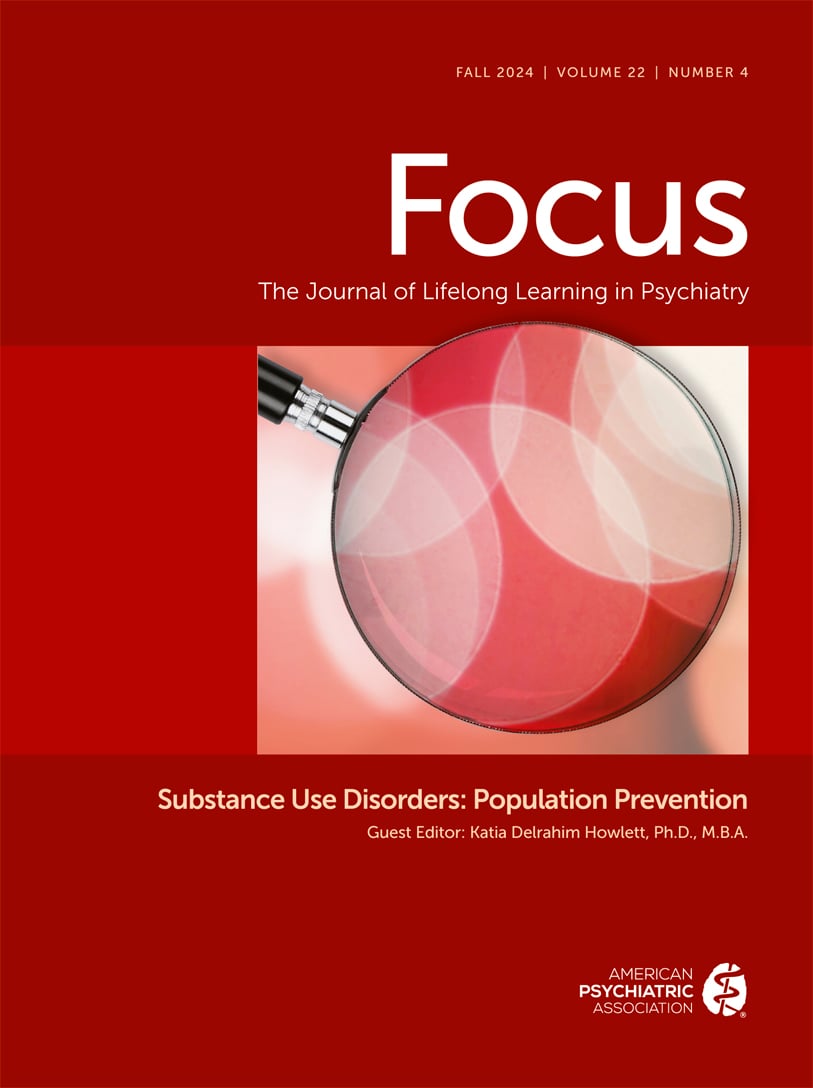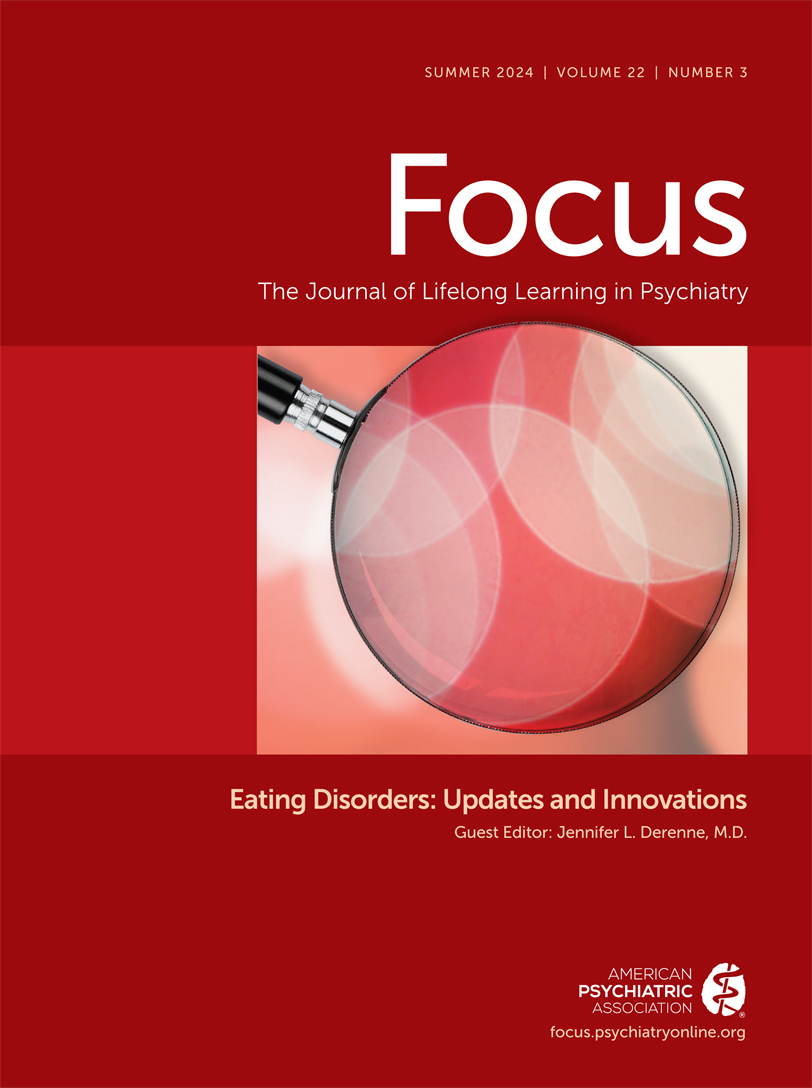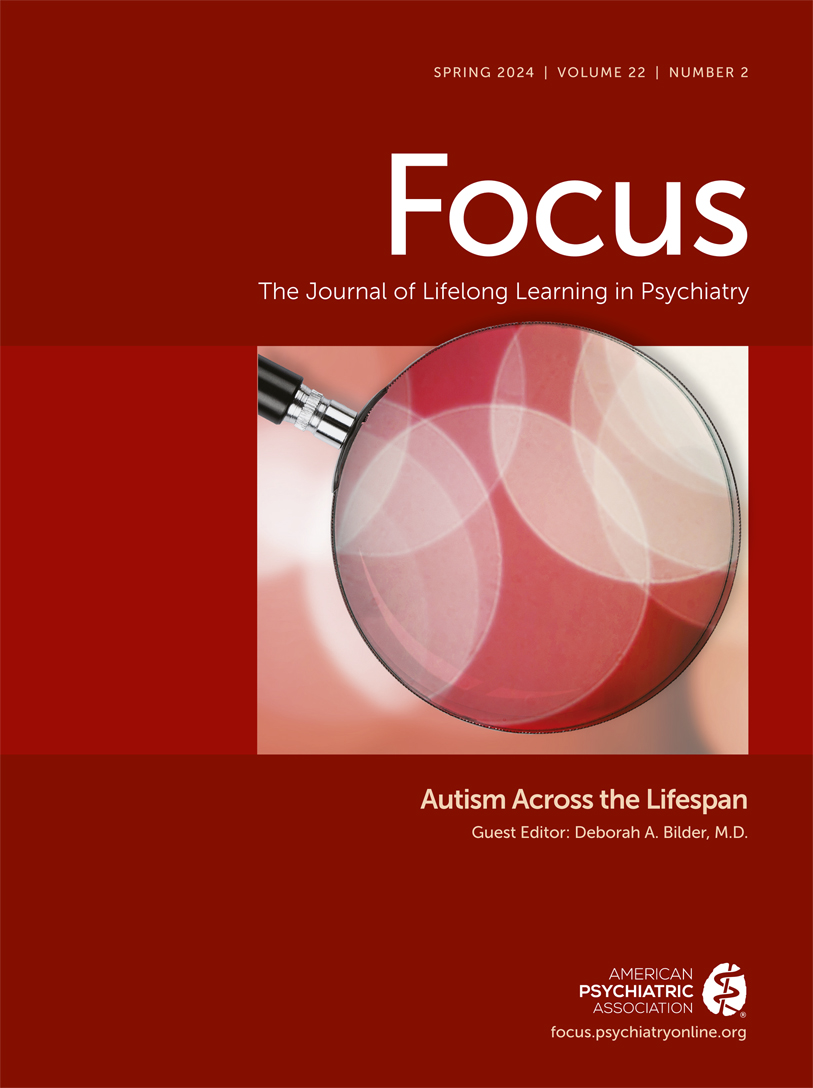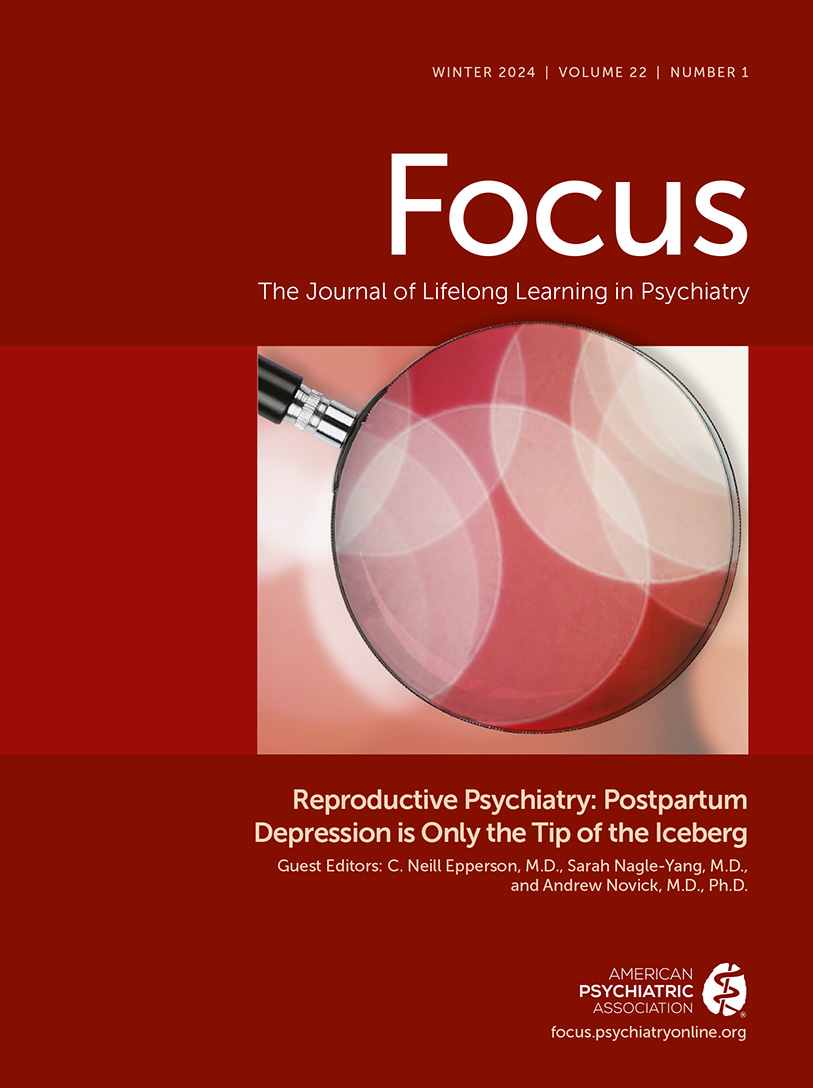Focus
- Volume 11
- Number 2
- April 2013
From the Guest Editors
Clinical Synthesis
Publication date: 01 April 2013
Pages123–128Excessive comorbidity within personality disorders and other psychiatric disorders is a perennial problem in psychiatric diagnosis and treatment. Questions of etiology, disorder hierarchies, and treatment decisions are problems clinicians face on a daily ...
https://doi.org/10.1176/appi.focus.11.2.123Publication date: 01 April 2013
Pages129–145This review summarizes the current body of knowledge about borderline personality disorder (BPD). Each section describes the development of BPD’s knowledge base in the 33 years since the diagnosis became part of the American Psychiatric Association’s ...
https://doi.org/10.1176/appi.focus.11.2.129Publication date: 01 April 2013
Pages146–154Neurobiological studies have focused primarily on DSM-IV axis I disorders, as they display extensive, and often severe and episodic symptomatology. However, there is an emerging focus on the neurobiology of personality disorders, consisting largely of ...
https://doi.org/10.1176/appi.focus.11.2.146Publication date: 01 April 2013
Pages155–166Attachment theory is a biopsychosocial model referring to a person’s characteristic ways of relating in close relationships, such as with parents, children, and romantic partners. These ways of relating are learned during early infancy and mold subsequent ...
https://doi.org/10.1176/appi.focus.11.2.155Publication date: 01 April 2013
Pages167–177This review will address pathological narcissism and narcissistic personality disorder (NPD)—the clinical presentation, the challenges involved in diagnosing NPD, and significant areas of co-occurring psychopathology (i.e., affective disorder, substance ...
https://doi.org/10.1176/appi.focus.11.2.167Publication date: 01 April 2013
Pages178–186Antisocial personality disorder (ASPD) is a common condition with major public health implications. Yet effective treatment remains elusive. In this paper the major descriptive symptoms of ASPD are considered using a mentalizing framework. Mentalizing is ...
https://doi.org/10.1176/appi.focus.11.2.178Publication date: 01 April 2013
Pages187–188Despite long-recognized and significant shortcomings, the criteria for personality disorders in Section II of DSM-5 have not changed from those in DSM-IV. A new approach to the diagnosis of personality disorders was developed for DSM-5, however, which can ...
https://doi.org/10.1176/appi.focus.11.2.187Publication date: 01 April 2013
Pages189–203The current approach to personality disorders appears in Section II of DSM-5, and an alternative model developed for DSM-5 is presented here in Section III. The inclusion of both models in DSM-5 reflects the decision of the APA Board of Trustees to ...
https://doi.org/10.1176/appi.focus.11.2.189Publication date: 01 April 2013
Pages204–209This exercise is designed to test your comprehension of material presented in this issue of FOCUS as well as your ability to evaluate, diagnose, and manage clinical problems. Answer the questions below, to the best of your ability, on the information ...
https://doi.org/10.1176/appi.focus.11.2.204Influential Publications
Publication date: 01 April 2013
Pages225–248Patients with personality disorders are prescribed psychotropic medications with greater frequency than almost any other diagnostic group. Prescribing practices in these populations are often based on anecdotal evidence rather than rigorous data. Although ...
https://doi.org/10.1176/appi.focus.11.2.225Publication date: 01 April 2013
Pages249–260Recent research findings have contributed to an improved understanding and treatment of borderline personality disorder. This disorder is characterised by severe functional impairments, a high risk of suicide, a negative effect on the course of depressive ...
https://doi.org/10.1176/appi.focus.11.2.249Publication date: 01 April 2013
Pages261–268Objective This study evaluated the effect of mentalization-based treatment by partial hospitalization compared to treatment as usual for borderline personality disorder 8 years after entry into a randomized, controlled trial and 5 years after all ...
https://doi.org/10.1176/appi.focus.11.2.261Publication date: 01 April 2013
Pages269–276Objective The authors examined three yearlong outpatient treatments for borderline personality disorder: dialectical behavior therapy, transference-focused psychotherapy, and a dynamic supportive treatment. Method Ninety patients who were diagnosed with ...
https://doi.org/10.1176/appi.focus.11.2.269Publication date: 01 April 2013
Pages277–283A 35-year-old woman, an academic professional, sought outpatient treatment for chronic dysphoria, a pattern of turbulent and unsuccessful interpersonal relationships, and a state of barely concealed rage that she attributed to the shortcomings and ...
https://doi.org/10.1176/appi.focus.11.2.277Publication date: 01 April 2013
Pages284–296Objective Virtually no research has tested alternatives to the diagnostic method used since DSM-III, which requires decisions about the presence/absence of individual diagnostic criteria, followed by counting symptoms and applying cutoffs (the count/cutoff ...
https://doi.org/10.1176/appi.focus.11.2.284Past Issues
View Issues Archive
Vol. 22 | No. 4

Vol. 22 | No. 3

Vol. 22 | No. 2
